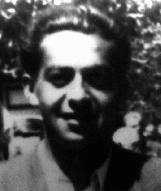You searched for: nazi germany
<< Previous | Displaying results 1001-1025 of 1276 for "nazi germany" | Next >>
-
Mobile Killing Squads
ArticleLearn more about Nazi mobile killing squads (Einsatzgruppen) killing activities in the Soviet Union during World War II.

-
The Syrets Labor Education Camp
ArticleSyrets was a labor education camp established by the Germans outside of Kyiv. Learn more about Syrets prisoners and their daily life in the camp.
-
Julius (Julo) Levin
ID CardJulo was born to a Jewish family in the city of Stettin in northeastern Germany. From an early age Julo showed an interest in art; at 6 he had collected more than 3,000 pictures. His family hoped he would become a businessman, but his interest in painting absorbed all his energy. In 1926 he graduated from art school and by 1931 he secured his first commission in Duesseldorf. 1933-39: Until the Nazis came to power in 1933, Julo was a highly regarded artist. The Nazis' strict interpretation of art, however,…

-
Heinz Rosenberg
ID CardHeinz was the youngest of three children born to a Jewish family in the German university city of Goettingen. His father owned a linen factory that had been in the family since it was founded by Heinz's grandfather. Goettingen had a small Jewish population, and only one synagogue. Heinz went to public school in the city. 1933-39: In 1933 the Nazis took power in Germany. A year later Heinz's family's factory was seized. Three SA men came to their house. An officer set a gun on the table and calmly informed…

-
Franz Monjau
ID CardAfter secondary school, Franz studied painting at Duesseldorf's Academy of Fine Arts, eventually shifting to art education. He joined an avant-garde group rebelling against traditional painting. Later, he taught art to high school students. For Franz the drift towards fascism was frightening, as was the increasing antisemitism. But being only half Jewish, he did not feel worried about his personal safety. 1933-39: Hitler became chancellor of Germany on Franz's thirtieth birthday. Five months later Franz…
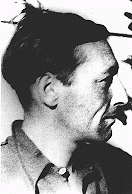
-
Emma Freund
ID CardThe second oldest of six children, Emma was raised by observant Jewish parents in a small town in southwestern Germany and they settled in the industrial city of Mannheim after World War I. There she had two children, a son in 1924, and a daughter in 1930. Emma helped her husband in his business. 1933-39: After the Nazis came to power, Emma's husband lost his business. Her sister Linnchen immigrated to South Africa, and the Nazis deported her brother Arthur to Dachau. When the Nazis burned down the local…

-
The "We Will Never Die" Pageant
Article"We Will Never Die" was a 1943 musical stage performance that raised awareness among Americans about the murder of European Jews. Learn more.

-
Johann Stossier
ID CardJohann was born to Catholic parents in the part of Austria known as Carinthia, where he was raised on the family farm. Johann enjoyed acting and belonged to a theater group in nearby Sankt Martin, which also happened to have a Jehovah's Witness congregation. He became a Jehovah's Witness during the late 1920s, actively preaching in the district around Sankt Martin. 1933-39: Johann continued to do missionary work for the Jehovah's Witnesses even after this was banned by the Austrian government in 1936. The…

-
Willibald Wohlfahrt
ID CardWillibald was the youngest of six children born to Catholic parents in a village in the part of Austria known as Carinthia. Disillusioned with Catholicism, his father and mother became Jehovah's Witnesses when Willibald was an infant, and they raised their children in their new faith. His father became the leader of the local Jehovah's Witness congregation. 1933-39: Willibald lived in a beautiful area near lakes and mountains. The Wohlfahrts were active in Jehovah's Witness missionary work, even though…

-
Leah Kohl Rapaport
ID CardLeah and her four brothers were raised in a religious Jewish family in the city of Lvov. After obtaining her high school diploma, Leah attended university for one year. In 1931 she married Joseph Rapaport, and the couple settled in Warsaw. 1933-39: The Rapaports lived in the suburbs, and Joseph worked as a banker. Their daughter Zofia was born in May 1933. Each year at the Jewish holiday of Passover, they returned to Lvov to visit Leah's parents. Two days after Joseph was mobilized for military duty in…

-
About Life after the Holocaust
ArticleAfter WWII and the fall of the Nazi regime, Holocaust survivors faced the daunting task of rebuilding their lives. Listen to six survivors tell their stories.
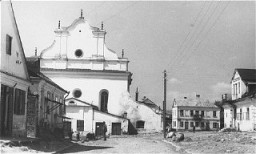
-
Polish Jewish Refugees in Lithuania, 1939–40
ArticleLearn more about Polish Jewish refugees that relocated to Lithuania between 1939-1940.
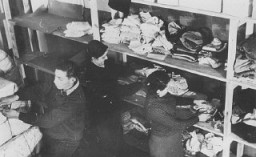
-
The International League Against Anti-Semitism in North Africa
ArticleThe International League Against Anti-Semitism in North Africa (LICA) was created in 1929 as a Jewish-Muslim partnership to combat racism and antisemitism.

-
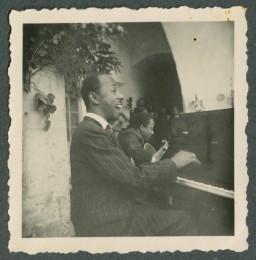
-
German Forces Launch Offensive
Timeline EventJune 28, 1942. On this date, German forces attacked the Soviet Union in the south towards the city of Stalingrad.

-
First Kindertransport Arrives in Great Britain
Timeline EventDecember 2, 1938. On this date, the first Kindertransport of German Jewish children arrived in Great Britain.
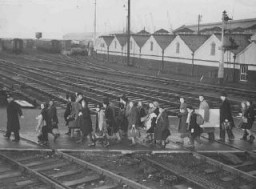
-
Ban on Jehovah's Witness Organizations
Timeline EventApril 1, 1935. On this date, the German government banned all Jehovah's Witness organizations.

-
International Military Tribunal
Timeline EventNovember 20, 1945. On this date, the International Military Tribunal in Nuremberg, Germany, began the trials of 21 major Nazi leaders.

-
Sighet
ArticleLearn about the history of Sighet, birthplace of Elie Wiesel. The Jewish population of Sighet was deported to Auschwitz in May 1944. Most of the deportees were gassed on arrival.
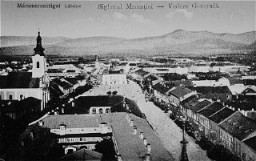
-
Martin Weiss
ArticleMartin Weiss and his family were deported to Auschwitz in 1944. Explore Marty’s biography and his description of arrival in Auschwitz.

-
Kato Fried
ID CardKato was born to Jewish parents in Smolnik, a small village in eastern Czechoslovakia. While still a young child, she moved with her parents and brother Theodore to Sighet, Romania. There in the Carpathian mountains, her father ran a lumber business that exported wood to Germany and Czechoslovakia. 1933–39: In the 1930s, the popular appeal of antisemitism and fascism increased in Romania. Leaders of the Iron Guard, the militant and violent Romanian fascist party, publicly proclaimed their support for…

-
Claude Brunswic
ID CardClaude was one of five children born to Jewish parents in the university city of Heidelberg. His father, a physician specializing in internal medicine, had his practice on the first floor of the apartment building in which the family lived. Claude was an avid swimmer until November 1932, when local Nazi party edicts forbad Jews to use the city pool where he swam. 1933-39: In January 1933, just after Hitler became chancellor of Germany, hoodlums attacked Jewish-owned businesses in Heidelberg. They broke…
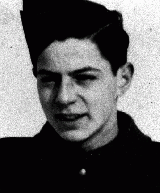
-
György (George) Pick
ID CardGyörgy was the only child of middle class Jewish parents living in the Hungarian capital of Budapest. His father, Istvan, was an engineer responsible for producing hydraulic grape presses for wineries. His mother, Margit, worked as a legal secretary. 1933–39: In 1938 and 1939, Hungary’s authoritarian government passed the first in a series of major anti-Jewish laws. The legislation severely restricted the participation of Jews in the economy and defined them in racial terms, much like the Nuremberg…
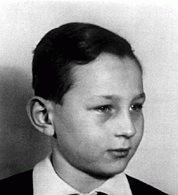
-
Susan Strauss
ID CardSusan grew up in Vacha, a small Thuringian town where her family had lived for more than 400 years. Her father, Herman, owned a general store and her mother, Bertha, took care of the home and children. Susan had a younger sister Brunhilde. The Strausses were one of about 25–30 Jewish families living in Vacha. 1933–39: Soon after the Nazis took power, many of Susan's friends stopped playing with her. In 1938 she was forced to leave the public school. That November, the Nazis unleashed a wave of pogroms…
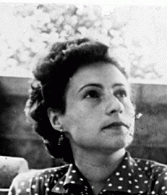
-
Elias (Elya) Grosmann
ID CardElias was born in a small town in the hill country of northeastern Slovakia. His family was Jewish, and he grew up in a religious home in which both Yiddish and Hungarian were spoken. His father was a peddler and his mother ran a small general store. Besides attending public schools, Elias received a formal Jewish education and attended Medzilaborce's rabbinical academy. 1933-39: The townspeople were mostly Jewish and worried about Nazi Germany. The German annexation of Austria in March 1938 alarmed them.…
